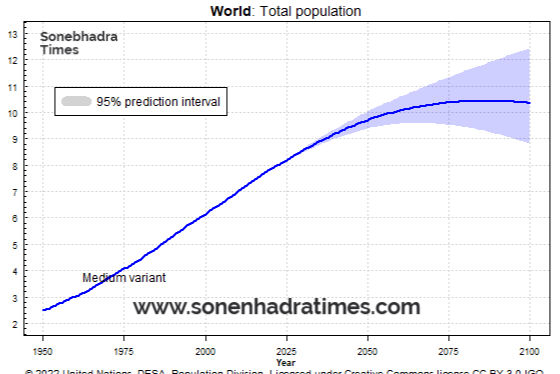- Sonebhadra Times
- Dec 31, 2024
- 2 min read
Global Population Milestone: The world population is anticipated to reach a significant milestone of 8.09 billion on New Year's Day 2025, a notable increase that reflects the dynamic changes occurring globally. This projection signifies an increase of over 71 million individuals in the year 2024 alone, highlighting the ongoing trend of population growth across various regions. Interestingly, this growth rate represents a slight deceleration compared to the previous year, during which the global population surged by 75 million.

The factors contributing to this population increase are multifaceted and include a combination of births, deaths, and migration patterns that vary from one region to another. For instance, it is estimated that every second, there are approximately 4.2 births occurring around the world, juxtaposed with 2.0 deaths.
This data indicates a net gain in population every second, underscoring the persistent growth trend that characterizes much of the globe today. The interplay of these demographic factors paints a complex picture of population dynamics, where certain areas may experience rapid growth while others may face stagnation or decline.
Focusing on the United States, the projections indicate that the nation will experience a population increase of approximately 2.6 million individuals throughout the year 2024, leading to an expected total population of around 341 million by January 2025.
This growth trajectory will be shaped by several key demographic influences, including birth rates, which have shown variability in recent years, death rates that reflect the aging population, and international migration that continues to play a crucial role in the demographic landscape of the country. The United States has long been a destination for migrants seeking new opportunities, and this influx contributes significantly to the overall population growth.
The combination of these factors not only affects the numerical growth of the population but also has broader implications for social, economic, and political dynamics within the country. Understanding these trends is essential for policymakers and planners as they navigate the challenges and opportunities presented by a growing and increasingly diverse population.